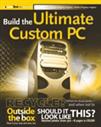June 24th, 2014
Odd problem on one of the Macs here ... on reboot the user accounts didn't show on the login screen, only the admin. It would appear if we used the Log Out command though, which was strange.
The problem turned out to be with FileVault, and the fix was painless.
- Open System Preferences
- Choose Privacy & Security
- Click on FileVault
- Click the Enable users... button in the preference pane and enable the user account you want to show on the screen. That users will need to enter their password to do this.
On reboot the users should show up on the login screen.
Like this:
Like Loading...
Posted in PC Doctor Tips by Adrian W. Kingsley-Hughes | Comments Off on Fix: User accounts don’t show on the OS X login screen
June 8th, 2014
If you're looking to download iTunes, don't, whatever you do, search for the download using a search engine.
Why?
Because there's no end of malware and junkware in the listings. Unless you know what you're doing, you can find yourself downloading nasties in the process. Most of the time you don't just get iTunes, but some other bundled adware, but sometimes you can get really unlucky and pick up malware that will infiltrate your system.
The only fully trustworthy place to get a copy of iTunes from is Apple.
https://www.apple.com/itunes/download/
Stay safe out there!
Like this:
Like Loading...
Posted in Stay Secure by Adrian W. Kingsley-Hughes | Comments Off on Beware when downloading iTunes!!!!
June 2nd, 2014
It's not every day I get a shout out from Apple CEO Tim Cook.

Like this:
Like Loading...
Posted in Random Stuff ... by Adrian W. Kingsley-Hughes | Comments Off on Shout out from Tim Cook
May 30th, 2014
Went to use my Canon Photosmart Plus printer the other day - a device that admittedly gets little use these days - only to find that it wouldn't print black. I tried the self cleaning utility but with no success.
Ho hum, so off I went in search of new cartridges.
Installed new cartridges (man, what are those things filled with? Unicorn tears?). Same problem.
Drat!
Several options went through my head, ranging from swear at printer, to junk the printer, to trying to repair the printer. Since I was for once wearing a white shirt I decided to try to repair the printer. On removing the printhead I found that it was caked in black ink and concluded that it was clogged. Since this thing has been properly taken care of and only fed genuine Canon cartridges, I'm kinda annoyed that this has happened since this is the sort of thing they warn you that fake inks will do to a printer.
I decide to take drastic action and wash the print head under the tap with warm water. Not a recommended procedure, but there's not much that can go wrong as long as you allow it to dry before reinstalling it. I used warm water and nothing else ... no detergent, no brushes, no poking it with a stick. I also took care not to bang the head against anything.
I washed it and allowed it to dry and reinstalled it.
Nope. Still no success.
Since I wasn't ready to give up and buy a new printhead, I decided to try a cleaning kit. A quick search on Amazon unearthed this, which sounded good and was cheap enough that if it didn't work I wouldn't feel too bad. I paid my money and waited for it to arrive.
Last night I gave it a go. I unpacked the kit, removed the printhead, and followed the instructions. About half an hour later I had a fully working printhead.
Success.
Now what was it that I wanted to print again?
Like this:
Like Loading...
Posted in PC Doctor Tips by Adrian W. Kingsley-Hughes | Comments Off on Clogged printhead coaxed back to life
May 21st, 2014
Cyberattack results in password leak.
eBay Inc. (Nasdaq: EBAY) said beginning later today it will be asking eBay users to change their passwords because of a cyberattack that compromised a database containing encrypted passwords and other non-financial data. After conducting extensive tests on its networks, the company said it has no evidence of the compromise resulting in unauthorized activity for eBay users, and no evidence of any unauthorized access to financial or credit card information, which is stored separately in encrypted formats. However, changing passwords is a best practice and will help enhance security for eBay users.
This bit from the release caused me to raise an eyebrow:
The database, which was compromised between late February and early March...
Isn't it May now?
*Check calendar*
Yup, it's May now.
Like this:
Like Loading...
Posted in Stay Secure by Adrian W. Kingsley-Hughes | Comments Off on Time to change that eBay password








